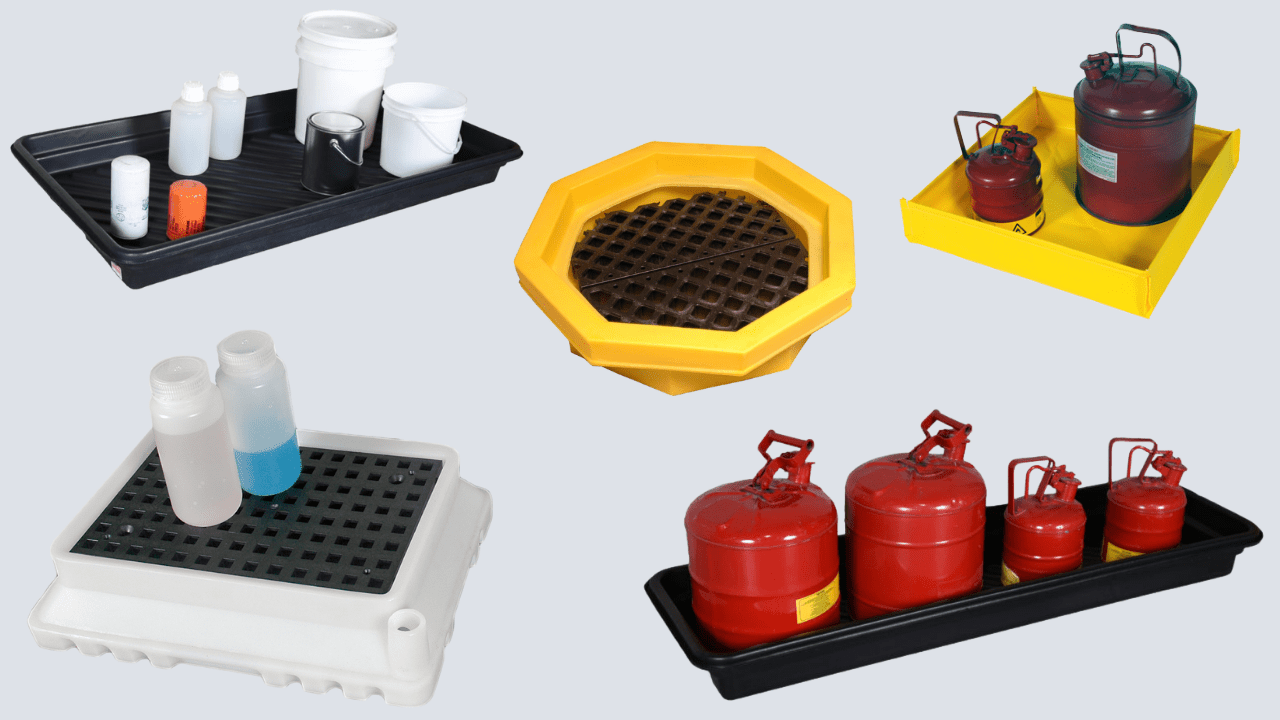Small spills in laboratories, warehouses, or even residential settings are often treated as inconveniences and not much more. But just like large outdoor oil or chemical spills, small spills indoors can pose similar threats. If not contained and cleaned properly, hazardous spills, in particular, can seep into the various nooks and crannies of an indoor space, threatening those who come in contact with the liquid, even after it dries.
To contain small spills, indoors or out, use a spill containment tray or spill containment berm, especially when working with hazardous liquids or chemicals. These small spill containment solutions are readily available, affordable, and can be used while actively working with liquids or simply storing them on a shelf. Be sure to check the chemical compatibility of the containment system you choose, however, to ensure it can handle whatever liquids you’re working with.
Spill Containment for Small Containers
There are various types and sizes of secondary spill containment systems available for small containers being stored or used indoors. Which solution you choose will depend on what liquids you’re storing and where you’re storing them. There are different small spill containment options for floors, shelves, and tabletops, each with its own chemical compatibility.
Containment Trays
One versatile secondary spill containment system for small containers—and much more—is similar to a typical 55-gallon drum spill pallet but much more compact (and is in no way designed for 55-gallon drums). Containment trays are low-profile sumps with anywhere from 5-15-gallons of liquid spill containment capacity. Like most spill containment systems, containment trays are often made of polyethylene, making them resistant to a wide variety of chemicals.
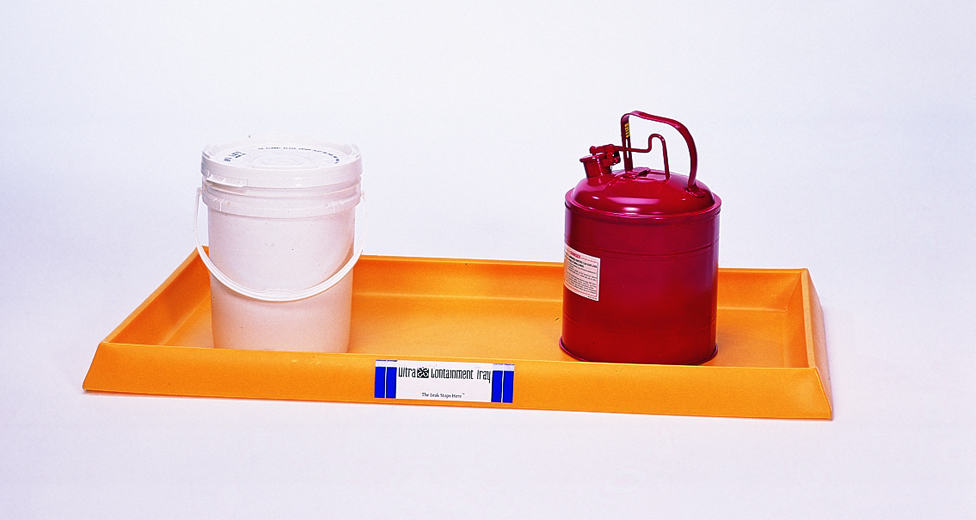
Depending on where you buy, optional grating that sits inside the tray keeps containers out of a spill, should one occur. The strong polyethylene grating is also what makes the containment tray so versatile. With the grating installed, the tray can be used as a storage pad for things like batteries, messy parts or tools, hazardous packages, and much more. Containment trays can also be used on the floor or workbench for things like mixing paints and other liquids prone to drips and spills.
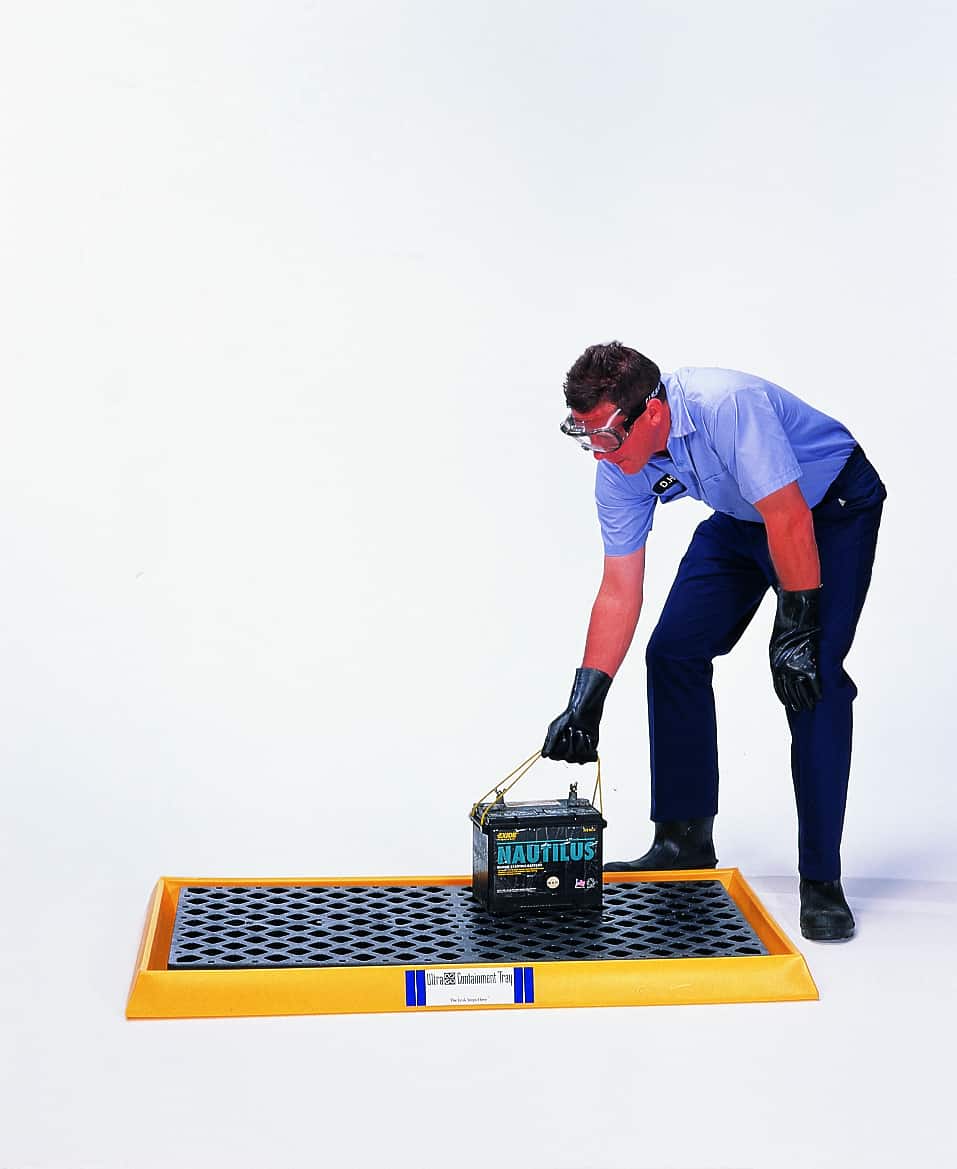
There are also specialized containment trays designed for specific needs, like containment trays that can be connected to one another for under-shelf spill containment or tabletop spill containment trays for use on laboratory countertops where chemicals are being mixed.
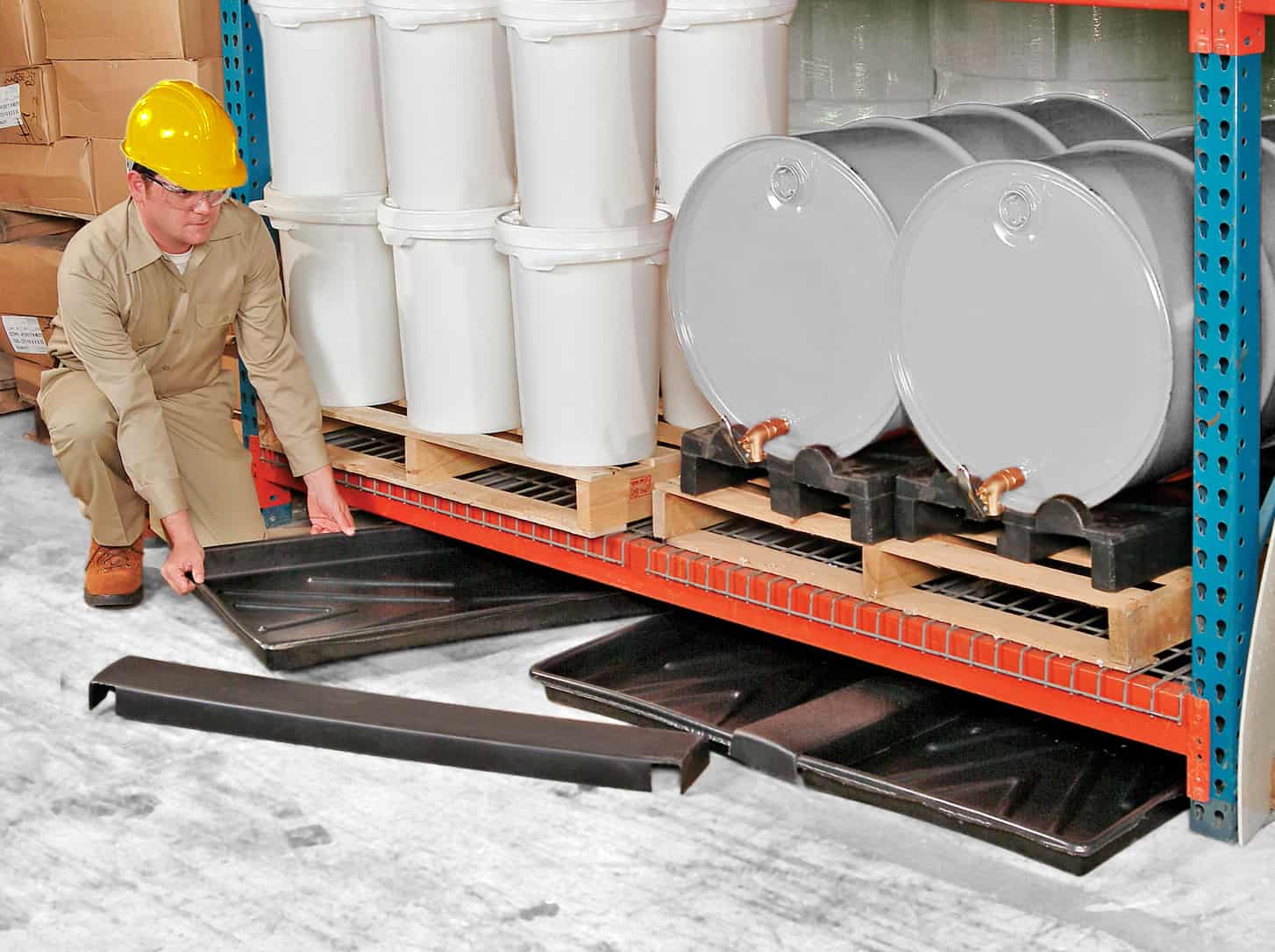
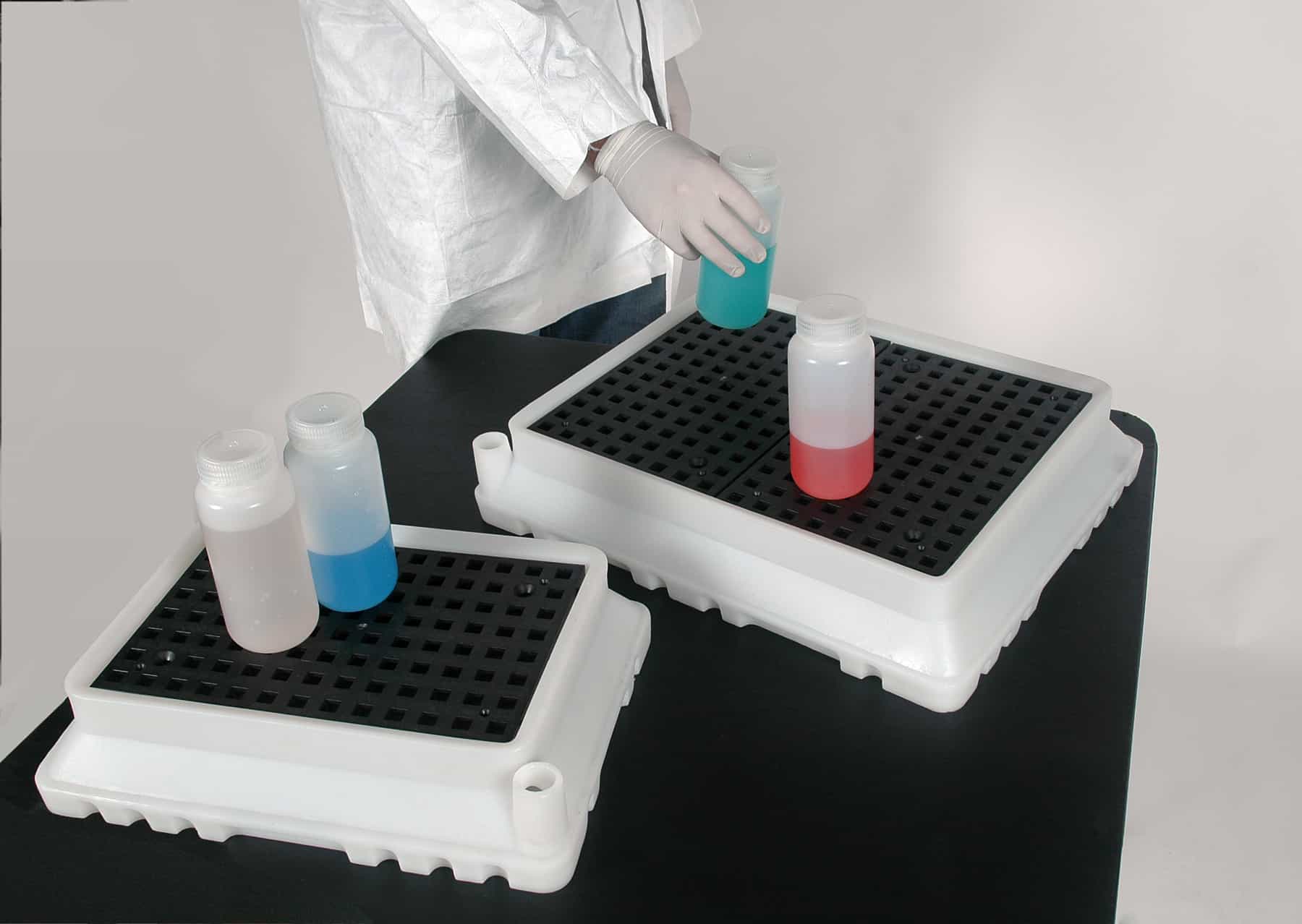
Utility Trays
Similar to containment trays but a bit more flexible is a standard utility tray. These trays are usually made from polyethylene which, again, makes them resistant to a wide array of chemicals, and are designed for a variety of uses. They can be used on the floor or on shelves for storing all kinds of small containers. Unlike containment trays with grating installed, containers sit inside the utility tray, while a ribbed-bottom design in most models keeps containers above any small spills or leaks up to a certain point.
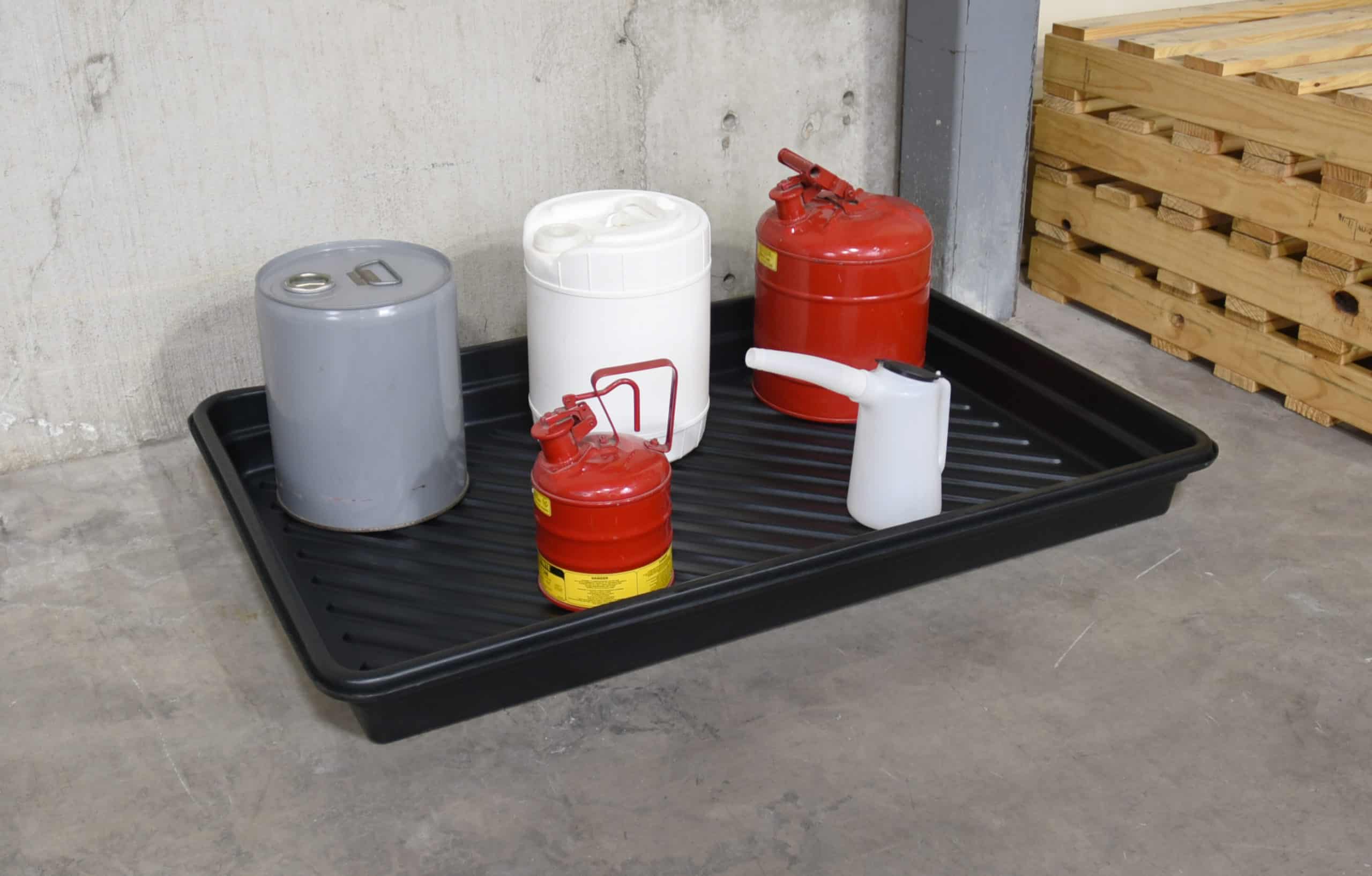
Utility trays can also be used under vehicles and equipment to capture small leaks and spills during maintenance operations such as oil changes, part swaps, and as a place to rest tools instead of on the ground.
There are also flexible utility trays that fold or roll up for easy storage and transport. These are great for on-site operations for anyone from painters mixing paint to truck drivers doing refueling operations and are available in a number of different sizes.
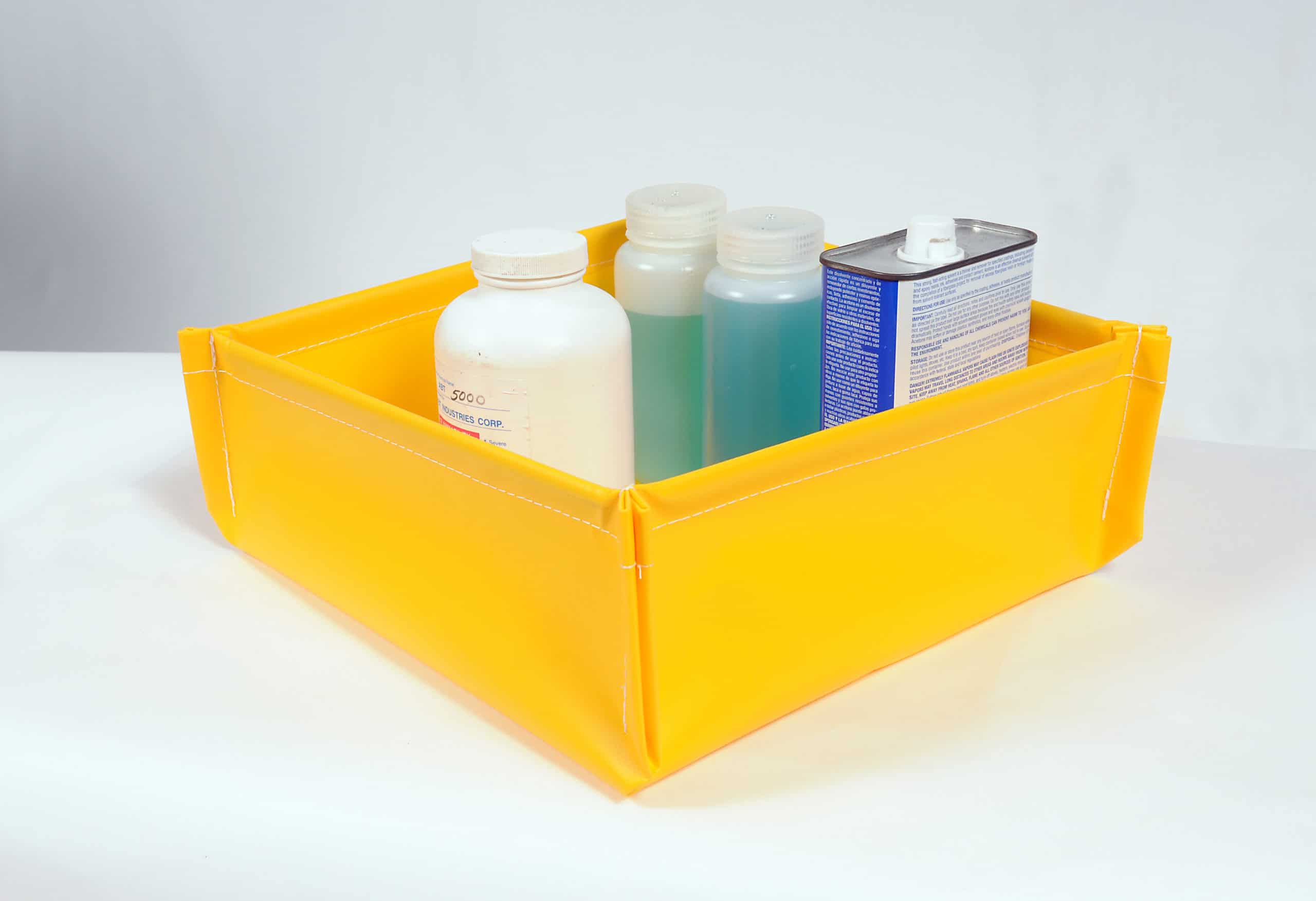

Spill Berms
Primarily designed to respond to a spill when it occurs, spill berms can be used to quickly surround work areas, equipment, or areas that you wouldn’t want a spill to reach—like a doorway or a drain. Spill berms are non-absorbent and are meant to be used as a temporary way to contain a spill, not as a means to store small containers or capture a leak or spill like something with sump capacity.
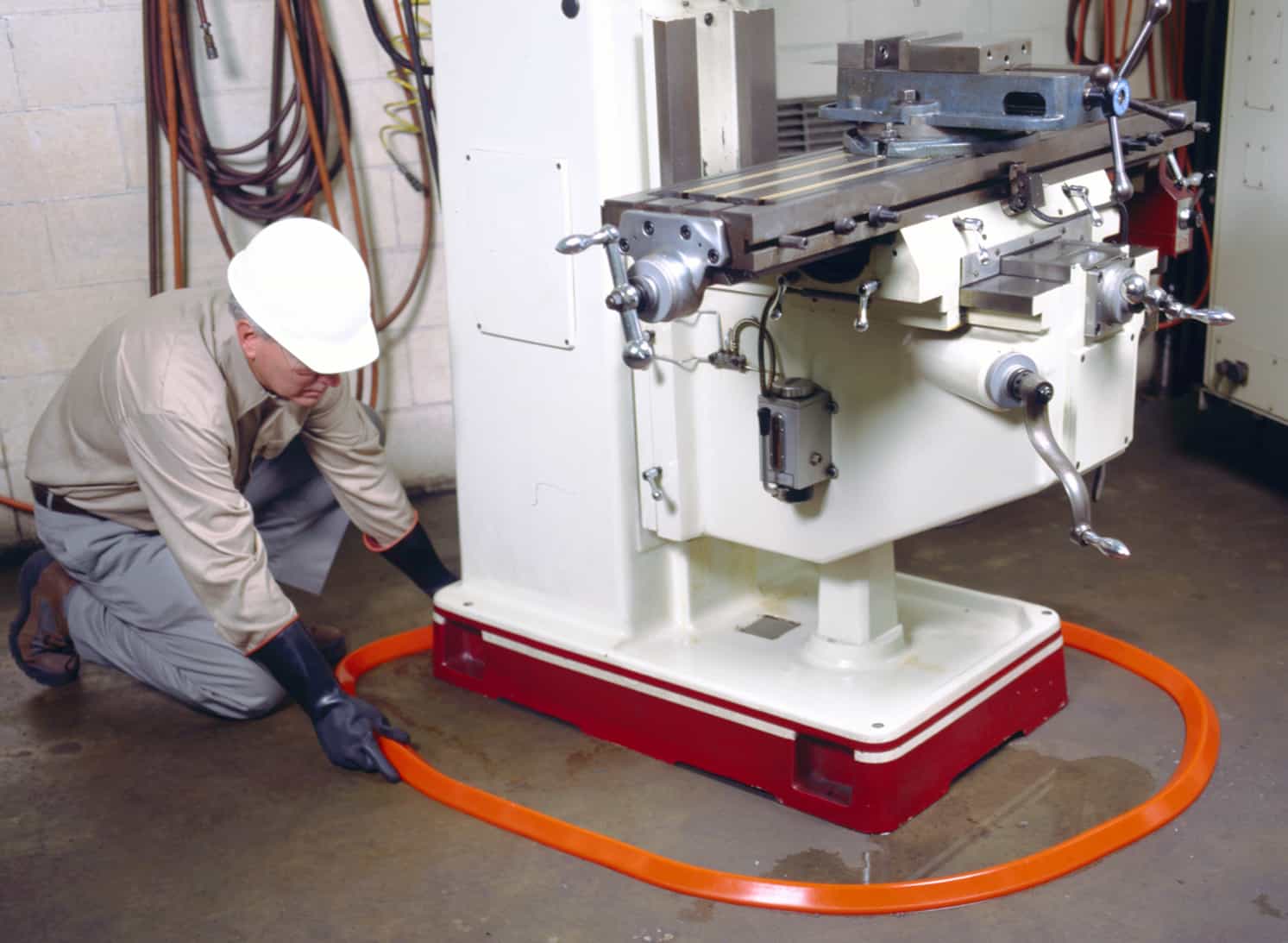
Spill berms are available in a variety of sizes from several feet for protecting drains, equipment, doorways, etc., to tabletop models used to respond to small spills in the laboratory or workshop.

Drum Trays
While 55-gallon or 30-gallon drums aren’t really considered “small containers,” they are commonly used to dispense liquids into smaller containers. For that reason, we’ll include the drum tray as a small spill containment solution.
A drum tray is essentially a miniature spill pallet. Drum trays usually do not meet EPA or SPCC spill containment regulations but are perfect for capturing nuisance drips that can occur during the day-to-day dispensing of liquids into smaller containers. Drum trays can also be used for storing or mixing five-gallon buckets of paint or similar liquids that tend to drip.
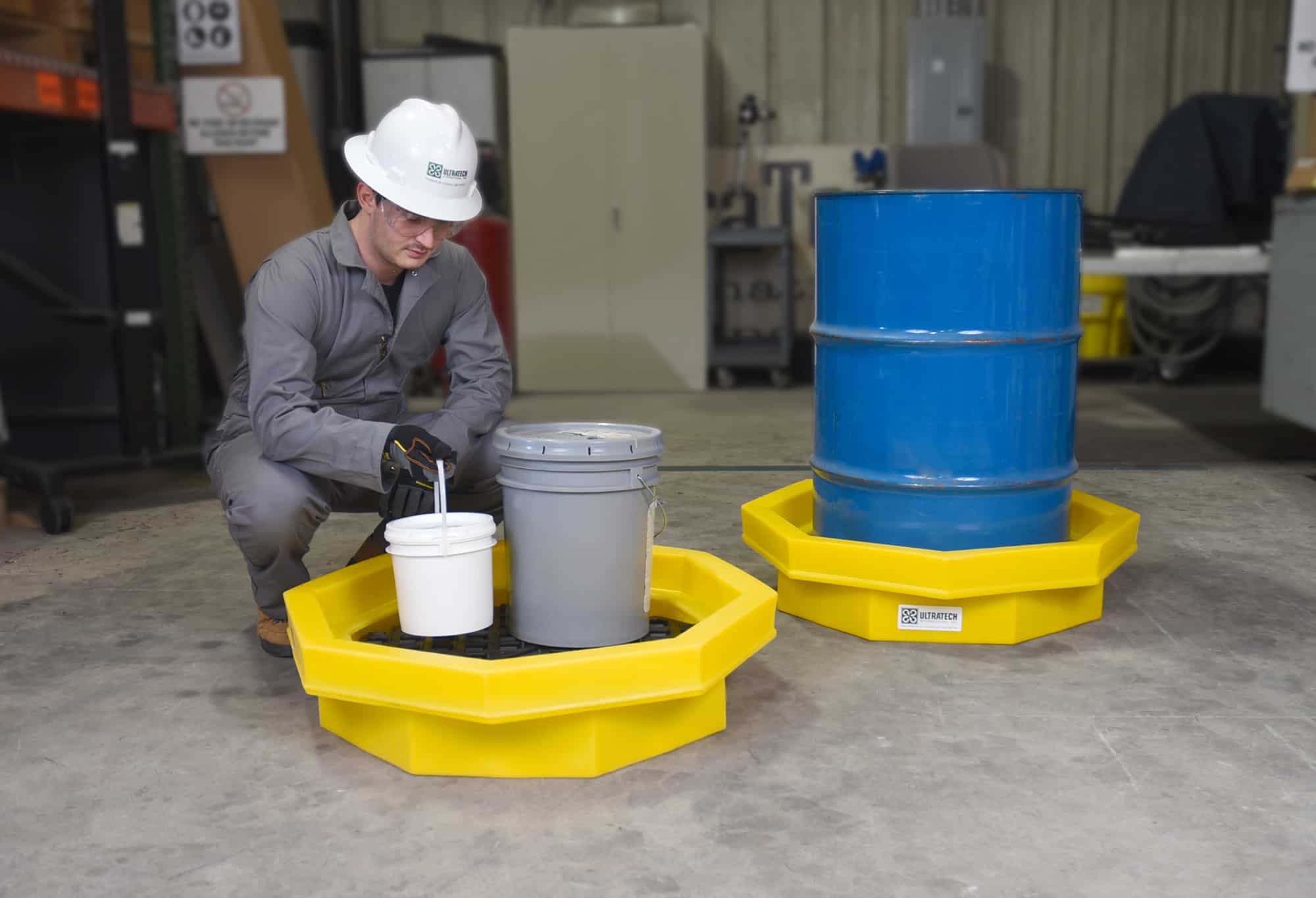
A slightly larger version of a drum tray but without the grating can be found in something like our own Ultra-Spill Collector. This is basically a large sump that can really only be used for 30-gallon or 55-gallon drums because its sidewalls are so high for smaller containers and mixing things. It is, however, an effective (and EPA/SPCC compliant) means to contain drips and spills from the larger drums used to dispense liquids into the smaller containers we’ve been discussing.
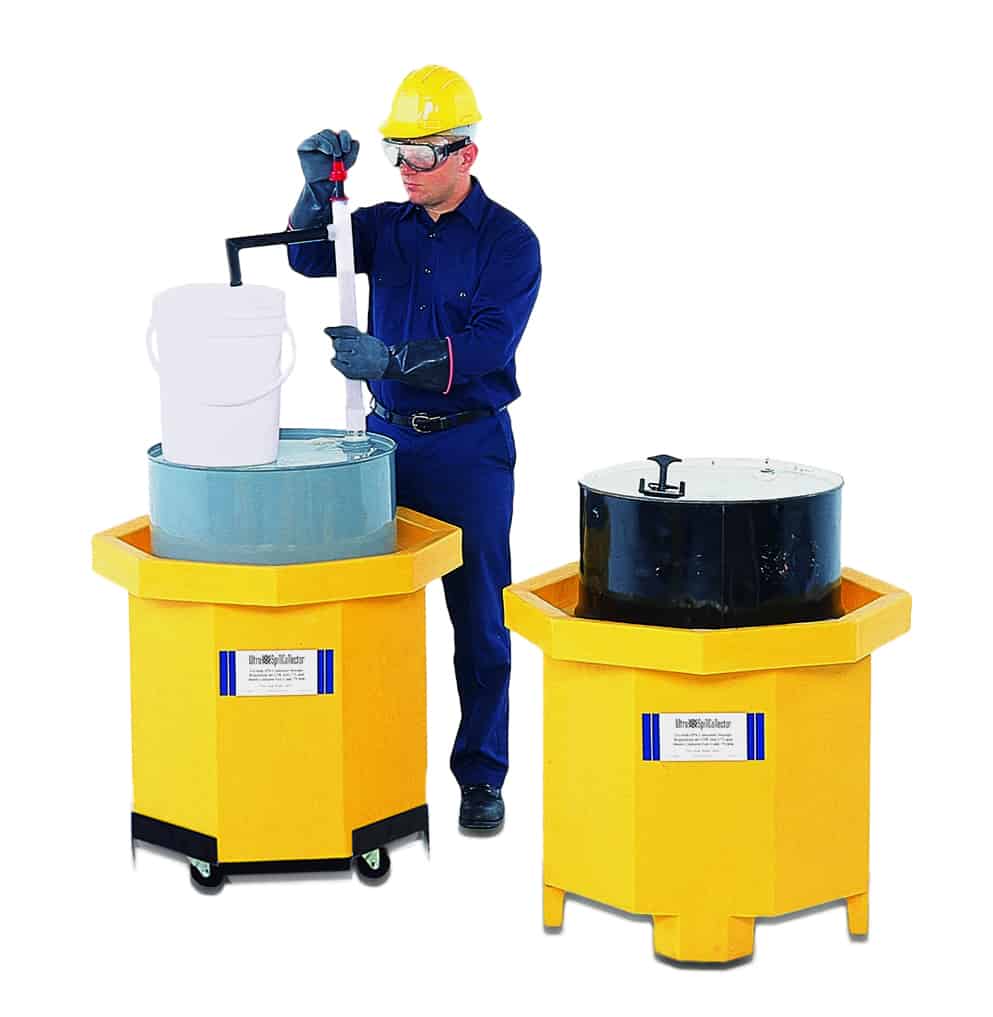
Spills vs. Leaks vs. Drips
We should note that unattended drips and small leaks can become just as dangerous as spills. Drips and leaks occur when connections aren’t secure or when things like hoses become damaged. Drips and leaks are often mishandled, as people tend to wrap the problem area with tape that is too loose or incompatible with the liquid that is leaking or dripping, or perhaps they’ll place paper towels under the leaky connection in an attempt to absorb the liquid. These are not adequate containment solutions or fixes and can actually pose more of a threat. For example, when some liquids are left to dry on towels, they become serious fire hazards—like kindling to a flame.
As much as it pains us to say so, please read the instructions and fine print when working with any hazardous liquid or chemical, and use the proper spill containment and clean-up procedures.
